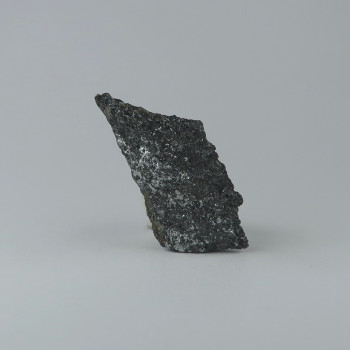Loellingite
Loellingite is an iron arsenide mineral – primarily valued by mineral collectors.
It is also known as Lollingite or Löllingite.
Showing the single result
Information about Loellingite
Loellingite is a metallic mineral that typically appears as silver-gray to iron-gray, often tarnishing to a darker hue upon exposure to air.
It forms prismatic or elongated crystals, though it is commonly found in massive or granular aggregates. The mineral has a bright metallic luster and is opaque, with a characteristic hard and brittle texture.
Loellingite often occurs in association with other arsenic-bearing minerals, such as arsenopyrite, as well as sulfides and gold deposits.
Uses and History
Loellingite is primarily of interest to mineral collectors and geologists studying ore deposits. It is occasionally mined as a minor source of arsenic.
Additionally, loellingite’s presence can indicate the potential for nearby gold mineralization, making it a valuable mineral in exploration geology.
Loellingite was named in 1845 by Wilhelm Karl von Haidinger after its type locality – Wolf mine, Lölling mining district, Hüttenberger Erzberg, Carinthia, Austria.
It has since been identified in various locations worldwide, including Canada, the United States, Russia, Sweden, and South Africa.
Its strong association with hydrothermal veins and metamorphic environments has made it an important mineral for studying arsenic-rich systems.
Mineralogy
Grey, dark grey, silvery-white.
Hazards and Warnings
Toxic mineral, contains arsenic.
Mineral collectors should wash their hands after handling specimens, to avoid any exposure to potential toxins.
Almost all rocks, minerals (and, frankly, almost all other substances on earth) can produce toxic dust when cutting, which can cause serious respiratory conditions including silicosis.
When cutting or polishing rocks, minerals, shells, etc, all work should be done wet to minimise the dust, and a suitable respirator or extraction system should be used.
Translations
Arabic:
Hindi:
Portuguese:
- Lollingita
Bengali:
Indonesian:
Punjabi:
English:
- Lollingite
- Loellingite
- Löllingite
Italian:
Russian:
- Леллингит
French:
Japanese:
Spanish:
- Löllingita
German:
- Loellingit
- Löllingit
Korean:
Thai:
Gujurati:
Mandarin Chinese:
- 斜方砷铁矿
Urdu:

